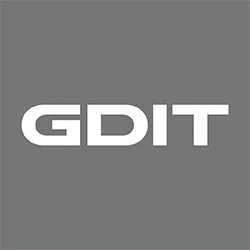AI is only as smart as the data it’s fed. Without clean, consistent inputs, models can struggle to produce meaningful insights. That’s why data normalization isn’t just an afterthought – it’s a mission-critical step. Data normalization is the process of standardizing data, often from diverse sources and formats, into a consistent structure for greater quality, security and interoperability across systems. As agencies and organizations increasingly adopt AI to enhance their missions, data normalization lays the foundation for effective deployment of AI/ML models by ensuring the trusted, high-quality data needed to achieve mission-aligned outcomes.
Overcoming Data Normalization Challenges
Against that backdrop, data normalization presents various challenges that government agencies must overcome. These challenges include managing data from disparate systems—often siloed, outdated or inconsistent across departments—and aligning it to a standard data model. Additionally, agencies must also manage vast amounts of various data types, from structured formats to complex unstructured content such as documents, images and sensor feeds.
To meet these challenges, tools that can normalize data from diverse sources across the enterprise can be a tremendous help. Leveraging these tools enables efficient integration into operational workflows while upholding accuracy, security and compliance. However, as data sources and formats evolve, commercial off-the-shelf products often struggle to keep pace, prompting organizations to explore alternative solutions, such as open-source platforms, to maintain flexibility and effectiveness.
GDIT collaborates with clients on data ingest and normalization efforts, forming the foundation for a wide range of transformative AI initiatives. We rapidly build custom solutions that incorporate the right commercial technology for the mission and align with datasets specific to each customer. Our team applies deep expertise across various data tools to efficiently ingest, clean and normalize complex data. We then use that high-quality data to train AI/ML models that replace manual processes with automation, delivering measurable improvements in mission execution and operational performance.
For one intelligence customer, we evaluated and implemented a suite of data normalization tools to automate previously manual processes in Microsoft Office, resulting in more efficient workflows and significant time savings. For another customer, we developed a solution that ingested video, radar and sensor data, and normalized it in real time to meet the customer’s standards. The data was prepared for immediate use in AI models, enabling actionable intelligence and seamless information sharing at the edge.
Data Normalization to Enable AI Transformations
Our Luna AI Digital Accelerator tests, builds and optimizes AI solutions that dramatically transform missions. In one Luna project, we designed a reference architecture for a data mesh that supports real-time data normalization, domain-specific persistence and seamless access through a catalog, web services or cloud platforms. This architecture gave users the ability to quickly access and use the data, trusting that it was accurately prepared for AI/ML applications.
Use cases like this are precisely why we created Luna, a mission AI solution. We wanted to provide a flexible environment where customers can experiment with various datasets, mission requirements, challenges and tools. Whether operating in the cloud, on-premises, at the edge or in hybrid environments, the Luna team delivers adaptable and scalable AI solutions that meet evolving customer needs.
The mission expertise in developing and deploying these AI models makes them effective. That expertise, combined with customer collaboration, creates impactful solutions that bring to life the art of the possible and advance the mission in entirely new ways.
Matt Pearce was recently named a winner of the Business Intelligence Group’s 2025 Artificial Intelligence Excellence Awards, recognizing his work as an innovator redefining possibilities across the AI field and at GDIT.






